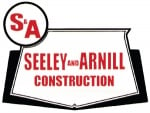Pulverizing and Milling

Full Depth Reclamation (FDR), often known as pulverizing, is a rehabilitation technique in which the full thickness of the asphalt pavement and a predetermined portion of the underlying materials is uniformly pulverized and blended to provide a stronger, homogeneous material.
The FDR process removes the existing asphalt pavement cracks and deterioration since the entire asphalt layer is pulverized. Pulverizing is a low-cost way to stabilize an existing base without the cost involved in removing and replacing it.
Cold Milling is the process of removing partial (1.5′-2.0′) or entire asphalt surfaces (3′-6′), while maintaining or correcting pavement grade & slope. The depth of cold milling is specified prior to the start of the milling process and is determined by evaluating the existing condition of the asphalt surface. The resulting textured pavement can be used immediately as a driving surface, or it can be overlaid with an asphaltic surface. Asphalt milling has been a cornerstone of the asphalt recycling industry developed over the last 20 years. Seeley and Arnill owns and operates a variety of cold milling units that are used on projects in Alberta, Saskatchewan, Manitoba, Ontario and British Columbia.
Benefits of Asphalt Milling
- Restores pavement to a uniform cross-section and longitudinal profile
- Restores drainage flow
- Restores curb-reveal for roadways and parking areas that have had numerous overlays
- Removal for reconstruction: Cold milled materials can be recycled into the sub-base, used in the new asphalt pavement or stockpiled for use at a later time
- Ruts and wash boarding: Cold Milling will remove ruts and smooth the wash boarding
- Deteriorating Lane: Cold milling on distressed lane will prepare it for pavement inlay while the remaining lanes may not require treatment
- Poor bonding potential: Cold milling will provide a texture for improved bond to the new pavement
- Energy saving: Millings that are removed can be used again in other road resurfacing and rehabilitation projects
- Economics: This material, long thought of as a nuisance to be disposed of, is an asset with substantial dollar value. It can be used untreated as an aggregate or can be processed in a pugmill and relayed with conventional paving equipment


